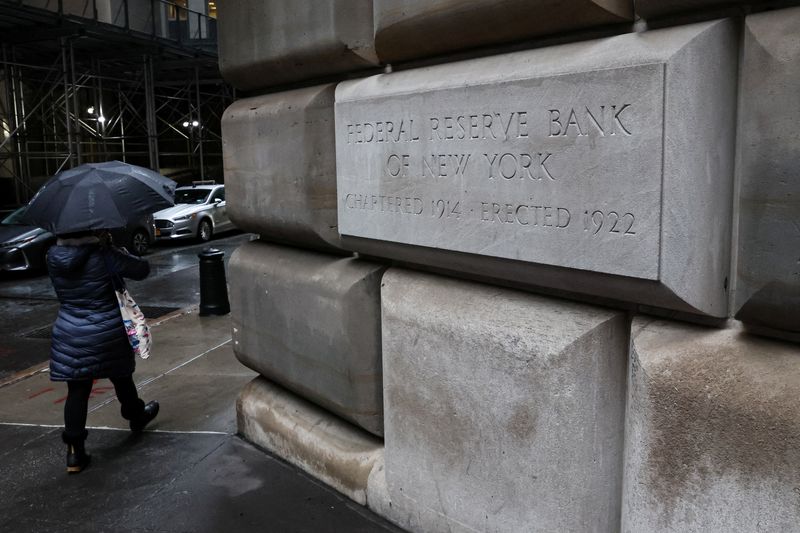(Reuters) - Total U.S. household debt levels edged up in the second quarter but overall delinquency rates stabilized, indicating that borrowers are still in decent enough shape to support the economy, a report from the Federal Reserve Bank of New York said on Tuesday.
The bank report, part of its survey of household debt and credit conditions, showed that overall debt levels rose by $109 billion, or 0.6%, in the second quarter to $17.80 trillion.
Overall borrowing levels are now $3.7 trillion above where they were at the end of 2019, before the onset of the coronavirus pandemic, the report said.
The data arrives at an uncertain time for the economy. The Federal Reserve raised its benchmark interest rate to 5.25-5.50% from near zero between March 2022 and July last year, where it remains, in order to quash high inflation. Borrowing costs overall jumped in lockstep but the economy remained resilient amid a high savings rate.
Worse-than-expected job market data last week, however, have made financial markets nervous that the economy may be on the cusp of a downturn. Fed policymakers, who already signaled they expect to begin cutting rates in September now that inflation is near the 2% target rate, have said they don't want to wait too long before lowering rates and have cited delinquencies as one area they are closely monitoring.
On that front there was some relief with the report showing that overall delinquency rates remained at 3.2%, unchanged from the first quarter, and still well below the 4.7% rate seen at the end of 2019 before the coronavirus pandemic.
However, transitions in delinquent borrowing levels rose slightly in the second quarter for credit cards and auto loans, which both remain elevated although the pace of worsening slowed. Roughly 9.1% of credit card balances and 8.0% of auto loan balances transitioned into delinquency over the past year.
Delinquency transition rates for mortgages also rose slightly but early delinquency rates for mortgage accounts remained low by historical standards, the report noted.
Mortgage balances were up by $77 billion to $12.52 trillion, while auto loan levels increased by $10 billion and overall credit card borrowing outstandings rose by $27 billion by the end of the quarter, to $1.14 trillion. Credit card balances during the quarter were 5.8% above the level they stood at a year ago. Retail cards and other consumer loans were effectively flat while student loan balances declined by $10 billion.
Home equity lines of credit (HELOC) balances rose by $4 billion, the ninth consecutive quarterly increase since the first quarter of 2022. HELOCs are a revolving line of credit secured against a borrower's home.
They now stand at $380 billion, a $63 billion rise since bottoming out in Q3 2021. Their renewed popularity reflects their attractiveness compared to cash-out refinancings or taking out a new mortgage amid high interest rates.

Of the roughly 1.8 million HELOCs originated since 2023, about 57% percent have gone to borrowers aged 50 or over, with about 24% going to those in their 40s. They are overwhelmingly only available to those with high credit scores.
The report also found new mortgage creation levels held steady at $374 billion during the second quarter, in line with the last four quarters, and well below that seen during the period between the second quarter of 2020 and the final quarter of 2021, when very low borrowing costs supercharged the housing market.
